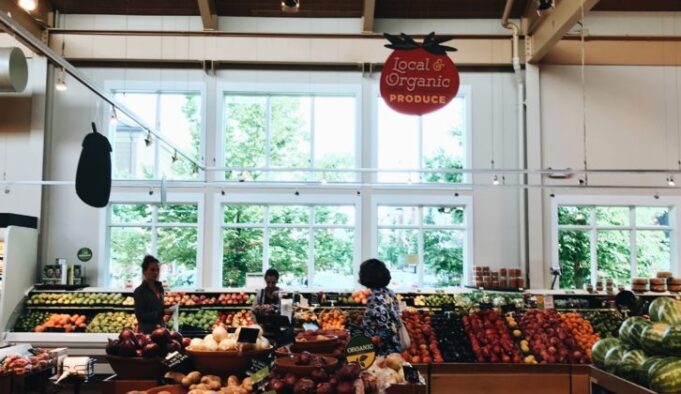As consumers emerge into a semi-post COVID world, the specifics of how they procure foods, beverages and meals for themselves and their households remains a rich topic reflective of complex events and always evolving lifestyle needs. In step with these trends, findings from our latest report, Food Sourcing in America 2022 document how there’s been a permanent shift to online food shopping simultaneous with a majority of shoppers returning en masse to food retail stores for in-person grocery shopping.
In the semi-post COVID-19 environment, consumers traverse today’s hybrid world of in-store and online grocery shopping and expect to move fluidly across shopping methods and channels. Shoppers are returning almost in totality to shop in person in food retailers, while at the same time embracing a permanent shift to use of online grocery services: 99% of shoppers in our study say they’ve shopped in a grocery store in the past 30 days, and 63% say they shopped online in the past 30 days. With regard to use of digital food shopping resources, in 2020, online shopping was near universally embraced as a means of preventing exposure to COVID-19 while acquiring necessities. Shoppers today appreciate the continued safety that online shopping provides with 62% of shoppers still concerned (25% highly, 37% somewhat) about getting COVID-19 while shopping.
While factors such as COVID-19 and safety still impact food shopping, inflation is a significant influence on food and beverage decisions. Shoppers say they are cutting back in different ways on food shopping due to the effects of inflation and depending on demographics. While inflation impacts everyone, those at lower income levels are the ones who have had to rethink how they live, what they buy, and how they shop. Among shoppers who say they’ve noticed rising prices, behavioral changes are most likely among those in lower-income households where almost half (47%) note that they have had to rethink how they shop for groceries compared to just one-quarter (25%) of upper-income households. Other inflation-related factors and behaviors include:









